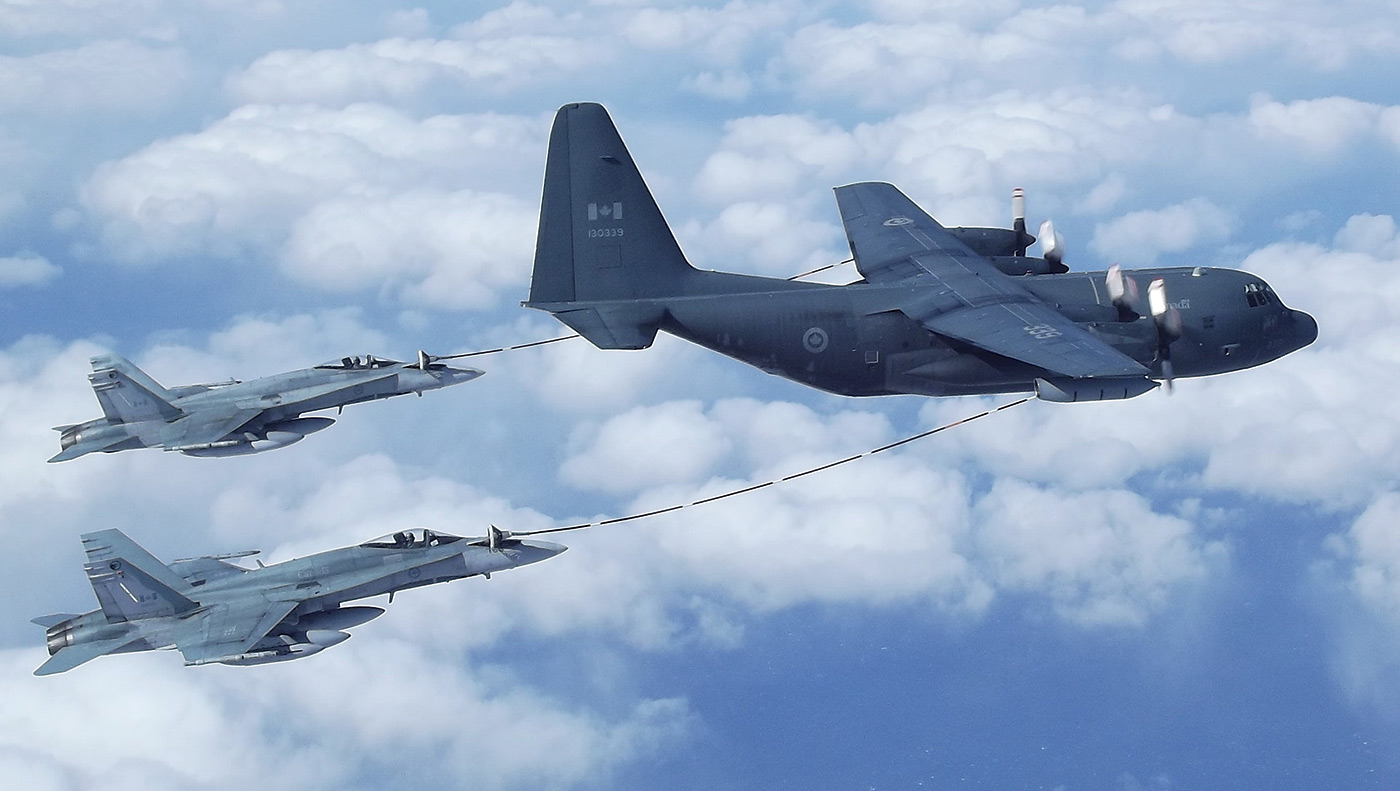Estimated reading time 15 minutes, 10 seconds.
If you’ve taken a long road trip, you’ve undoubtedly seen that sign: Last chance for gas. Usually, it’s only a warning that the next gas station lies a few hundred kilometres over the horizon. But for the pilots of Royal Canadian Air Force CF-188 fighter jets, the last chance to tank from a CC-130HT Hercules has a fixed date — July 2020.

Next year, 435 Transport and Rescue Squadron, based at 17 Wing Winnipeg, Man., will cap a 26-year air-to-air refuelling (AAR) mission in order to serve as the lynchpin in a plan to transition search and rescue squadrons from their legacy fixed-wing aircraft to the new Airbus CC-295.
“My marching orders are that July 2020, air-to-air refuelling will cease,” said LCol John Coffin, commanding officer of 435 Squadron. “And I just heard it again verbally from the division commander [recently], so we are planning accordingly.”
The decision is being executed with mixed emotions, he acknowledged. The Chinthe squadron is named for the leogryph, a half lion and half-dragon like creature often seen at the entrances of temples in Southeast Asia where the squadron was first formed in November 1944. Seventy-five years later, it still has that dual personality, simultaneously delivering two high priority missions: Search and rescue and AAR for NORAD fighter jets. It also provides vital air mobility, lifting troops, supplies and equipment into both domestic and international operations.
The transition to a single focus on search and rescue (SAR) might relieve some of the split personality symptoms, but “we will lose a significant part of what makes 435 unique,” said Coffin. “And there will be lots of members of 435 who will miss that AAR role.”
To appreciate how significant a change that will be, consider that the squadron has in recent years regularly supported CF-188 training exercises in Canada, the United States and as far away as Australia, annually delivered supplies to Canadian Forces Station Alert, the most northern base in Nunavut, been on standby to move troops and equipment for the Canadian Forces Disaster Assistance Response Team to support a humanitarian aid operation, and airlifted supplies to Operation Impact in Iraq.
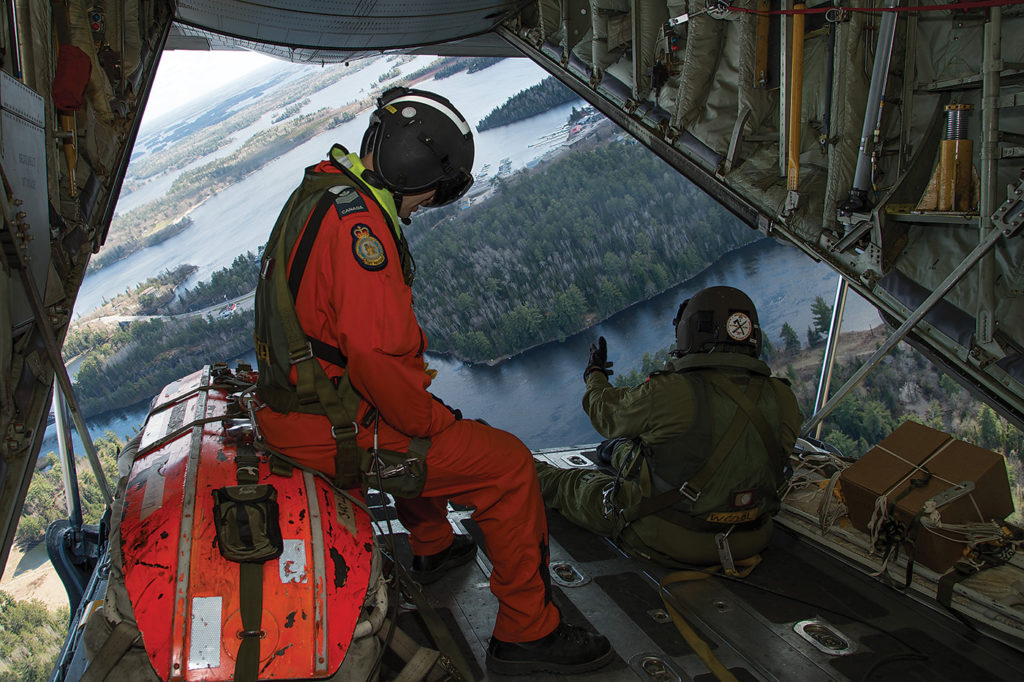
That versatility is hardly new. Ever since the squadron stood up in Gujarat, India during the Burma Campaign, it has been a vital transport arm, flying everything from the Douglas DC-3 Dakota, to the Fairchild C-119 Flying Boxcar, and the Lockheed C-130B and E-model Hercules before receiving its current HT-models in 1992.
However, air-to-air refuelling and search and rescue have become its defining missions. Squadron Hercs have provided tanking support to both Canadian and U.S. fighters on quick reaction alert duty in the Canadian NORAD Region (CANR), the largest of NORAD’s three regions, all the while holding a 24/7 posture to respond to SAR incidents across an area of responsibility that extends from Quebec to the British Columbia/Alberta border, and from the U.S. border to the North Pole. And incidents, whether downed aircraft, lost hunters, distressed boaters or the accidental activation of an emergency locator transmitter, are a weekly occurrence.
Meeting the demands of those primary roles has meant a delicate balance of available resources. 435 Squadron has just four CC-130H Hercules, which can be configured for either SAR or AAR. Given their age, one is often in deep maintenance and the others are prone to mechanical problems. Maintenance technicians do their best to return aircraft to service as fast as possible, Coffin said, but resources are sometimes stretched thin.
Fortunately, deciding which priority mission takes precedence is not a choice he has to make. The squadron reports to the commander of CANR for NORAD tanking and to the commander of 435 Squadron’s SAR Region (SRR), both of which happen to be the commander of 1 Canadian Air Division (1 CAD) in Winnipeg.
“My job is not to prioritize the task–those missions get directed at us from higher,” said Coffin. “My job is to make sure I have people who are qualified and capable of doing their job, [and] also equipment, from the airplanes right down to the wrenches the maintainers use, to parachutes the SAR technicians use, that are ready to go whenever they’re needed.”
Since the commander of 1 CAD also has the resources of 424 Transport and Rescue Squadron at 8 Wing Trenton, Ont., at his disposal, resources can be reallocated as necessary to deconflict any issues 435 Squadron might encounter between its SAR and AAR tasks.
“He does have some flexibility there,” said Coffin, a former commandant of the Canadian Forces School of Search and Rescue. “The commander can leverage Trenton to hold SAR for the entire region while we use our aircraft to do the AAR mission.”
The SAR community maintains “great lines of communication” and shares personnel and periodically aircraft among squadrons to cover shortfalls, he said. “The difference for 435 is we are the only Herc squadron that does air-to-air refuelling.”
Despite it’s no-fail mantra, that doesn’t necessarily make SAR the top priority, said Maj Cameron Pow, deputy commander of 435 Squadron. “Ultimately, sovereignty would take precedent. But that’s the tricky part about the squadron–it’s always a fight for those resources. We report to 1 CAD and say, here is what we have available, what is your choice?”

The squadron maintains a 30-minute posture to be airborne should a SAR incident arise during daytime on weekdays, and a two-hour posture at nights and over the weekend. And although the Hercules have their issues, the expectation is a 100 per cent service availability rate for both high priority missions.
But when a NORAD mission is activated, “just throw a hand grenade in here,” said Pow, a former CH-146 Griffon pilot who deployed with 408 Tactical Helicopter Squadron to Afghanistan in 2008-09 and served as an instructor pilot with 403 Squadron, Gagetown, N.B. “Everything then just switches. We still maintain the SAR capability, but that sovereignty mission takes the full attention of the squadron.”
“It is an exciting part of the squadron,” said Coffin. “And I have amazing people. Because we are the pointy end of the spear, everybody is singularly focused and motivated to get the job done.”
Like the rest of the Air Force, though, 435 Squadron has at times been challenged to retain its most experienced personnel. While it is below its full complement of aircrews and maintainers at the moment, Coffin noted the squadron has more than most because of the two priority lines of tasking. “We can leverage that by cross-training individuals to do different jobs and fill gaps within the squadron,” he said.
Much of the maintenance on the Hercs is common to both missions, though there is some specialization for techs who work on the refuelling tank, which takes about 12 hours to install and test, and the AAR pods.
But the high tempo of missions has kept maintainers busy. The squadron runs two shifts, day and night, as well as a duty crew that, like an aircrew, is a pager-call away 24/7. “When we launch on a SAR mission, they are there for takeoff, there for recovery…they turn the aircraft around, refuel it, and off we go again,” explained Pow.
To tank or not to tank
While Coffin has his marching orders, he acknowledged a discussion is percolating about what comes next for tactical tanking. The RCAF has a project valued at up to $5 billion to acquire a new strategic tanking and transport capability (STTC) that will replace the CC-150 Polaris. While there is no formal project to replace the tactical tanker, the Air Force believes a future strategic tanker should be able to fulfill the varied support roles performed by the CC-130HT refuellers.
“We foresee that the capacity that is going to be delivered by the [STTC] project will have a lot more flexibility than our current Polaris fleet can deliver,” Col Jason Kenny, director of Air Requirements, told RCAF Today. “That is going to be able to fulfill our operational requirements as well as our force generation requirements.”
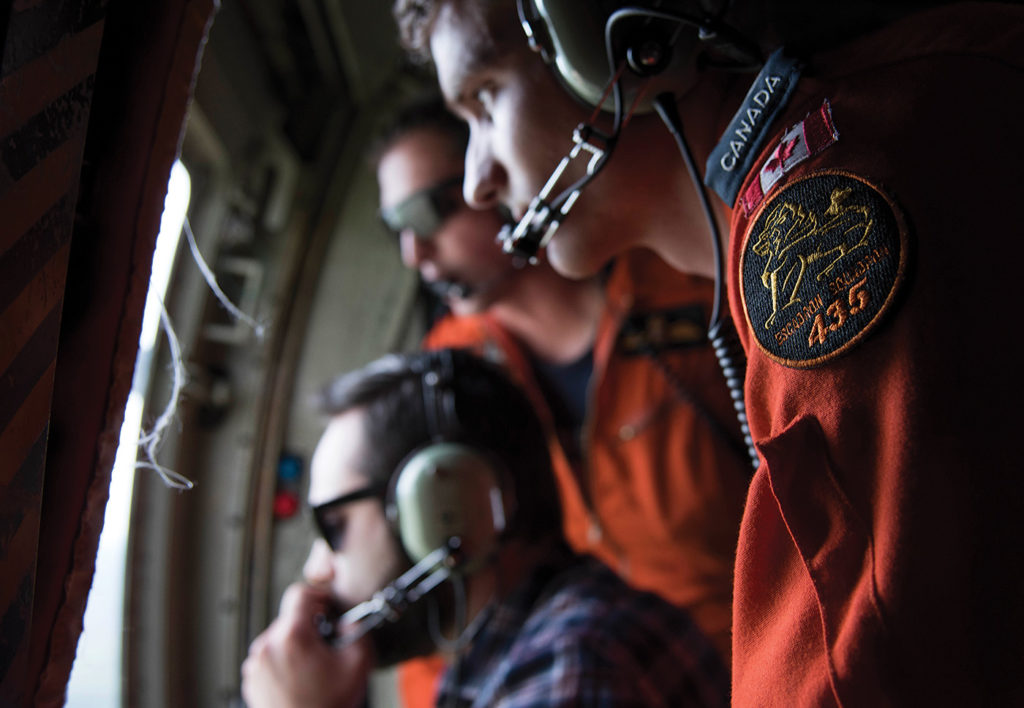
At present, just two of the five Polaris aircraft are configured for probe and drogue tanking; the other three provide passenger, cargo and government VIP transport. The Air Force has not specified how many new aircraft it will require, but BGen Michel Lalumiere, director general of Air Force Development, told an industry conference in April there are several critical demands: Greater flexibility to quickly reconfigure from tanking to transport; better interoperability with allies who need boom or probe and drogue refuelling; and endurance to reach any destination in one fuel stop to better manage crew days.
However, the first of the new strategic tankers is not slated for delivery until around 2028, so the Polaris, which has matured its capability significantly from experience during Op Mobile over Libya and Op Impact, will be carefully managed to meet as many of the tactical tanking demands as possible.
“That is our mitigation in the medium-term until we can get the strategic tanker capability project to deliver,” said Kenny. “There is an acknowledgement we will have to prioritize and plan things appropriately so we retain our readiness levels, especially as the fighter force continues to grow.”
The strategic tanking role is vital to force projection–the CC-150 flew more than 1,150 sorties refuelling coalition fighter jets during a four-year deployment on Op Impact over Iraq and Syria. But the tactical tanker has been essential to fighter pilot training.
“We offload about two to three million pounds of gas every year, mainly in exercises,” said Capt Pat Ketsman, a tanker commander and 435 Squadron’s chief of air-to-air pilot training when RCAF Today visited in April. (He has since assumed responsibility for air-to-air standards.)
“We are a force enabler for the fighters so they can get their force generation done. We work with all the squadrons. Often when they go on exercises, we will meet them halfway, get them to where they are going, and then join them and bring them home after.”
With a Hercules tanker orbiting overhead, fighters can conduct multiple revolutions, referred to as vols, against targets without having to land and refuel, which reduces wear and tear on the aircraft and lowers maintenance costs. When 401 Tactical Fighter Squadron deployed in April to Exercise Sandy Fleece in Fort Worth, the supporting Herc increased force generation by about 33 per cent, said Ketsman.
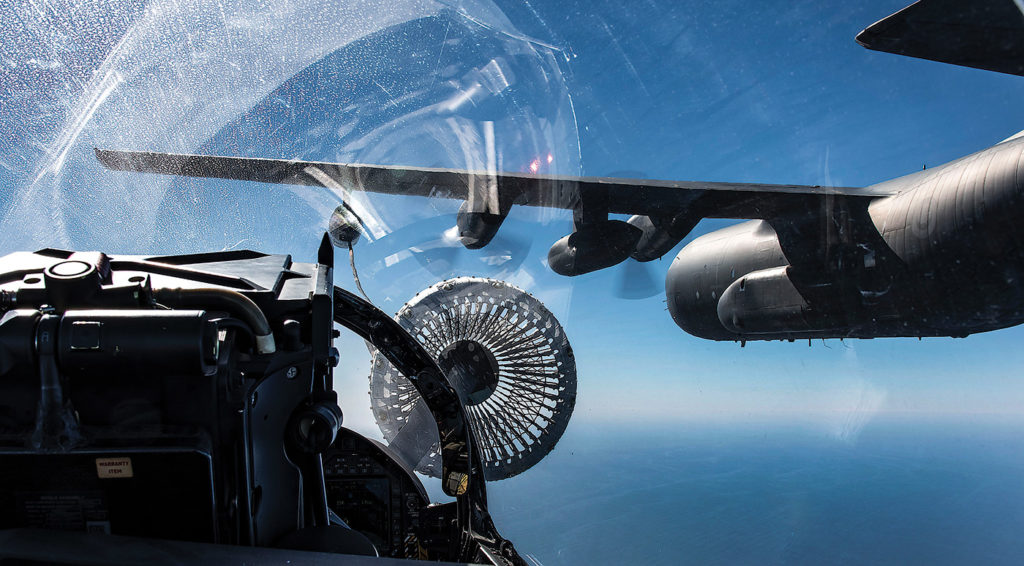
“Fighters are like addicts when it comes to gas. Each 100 pounds of gas is about a minute of flying and we were offloading about 40,000 pounds per vol. That’s about 8,000 minutes. It’s a lot of flying time for fighters and they need it. When we are on the go, it’s two vols a day, 2.5 hours per vol, and only two hours on the ground in between. It is a huge benefit to have a tanker.”
Though Hornet pilots are well trained by the time they begin learning air-to-air refuelling at 410 Tactical Fighter Operational Training Squadron, there’s an argument to be made that the Hercs may be better suited–and more cost effective–than a strategic tanker for the role.
The end of the Herc tanking era may be on the horizon, but Pow said many in the fighter community are “pushing forward” concerns about the importance of a tactical tanking capability.
Enabling transition
Ceasing AAR operations has a tactical purpose, however. 435 Squadron has been designated the swing force that will allow the rest of the SAR squadrons to transition from their legacy CC-130H Hercs and CC-115 Buffalos to the new Airbus CC-295, beginning with 442 Transport and Rescue Squadron at 19 Wing Comox, B.C., in October 2020.
“The details aren’t ironed out, but the plan is for a 435-led, SAR community-supported, detachment of aircrew, maintenance and aircraft that will be situated in Comox for about five months to ensure 24/7 SAR coverage,” explained Coffin. “That group will come back to Winnipeg, we’ll do some training and reconstitute, and then a similar det will go to Trenton for about two to three months. They’ll come back to Winnipeg and then to Greenwood for another two to three months. Then we’ll start 435’s transition to the CC-295.”
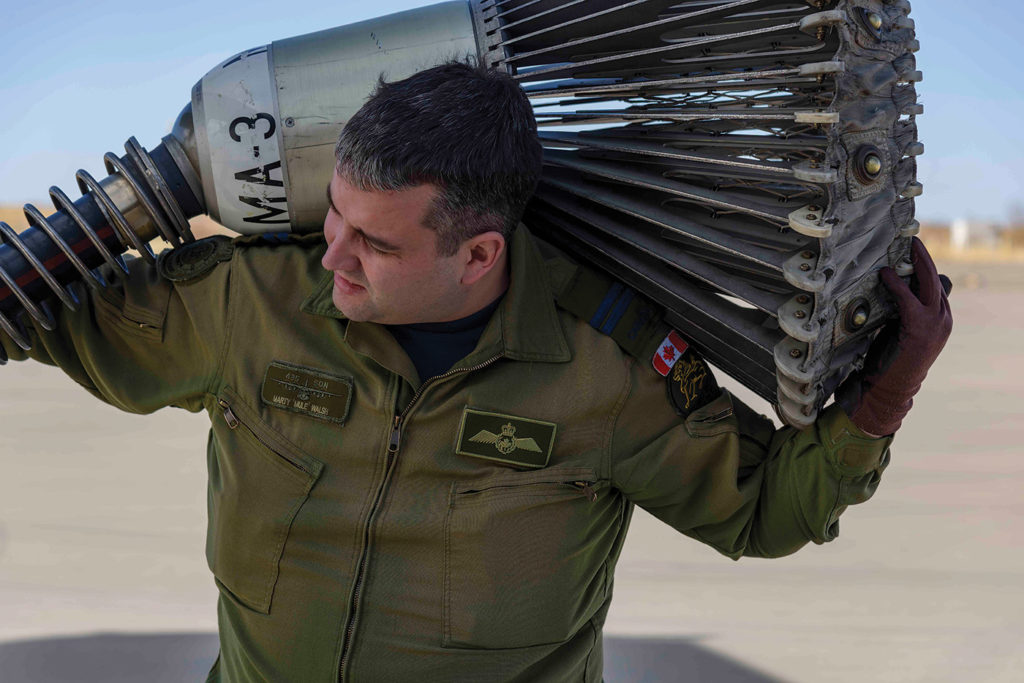
The goal is to have all four SAR bases converted to the new aircraft by the end of 2022.
“We have been brainstorming here how we are going to pull that off,” admitted Pow. “We are still working on the plan.”
Part of the challenge will be managing a shortfall of not only maintainers, but also SAR techs and flight engineers, who will be required for both the CC-295 training and to maintain the current SAR posture with the legacy aircraft. “This will be a whole Herc community-supported transition,” he said.
Though that will mark the end of almost three decades of CC-130H operations in the Air Force, Coffin said a lot of aircrew are looking forward to the new aircraft. “Many will miss the legacy of the Hercules and the comfort of being on the bigger aircraft, but the automation and new systems will be a game-changer that will enhance our SAR capability,” he said of the CC-295’s mission system and sensor suite.
Tales from the past
As much as 435 Squadron is looking ahead, 2019 is also a year to reflect on its past. In addition to commissioning artwork of a Chinthe and commemorative tail art for one of the Hercules from Jeff Chester, the artist behind many of the Air Force’s demonstration Hornets, the squadron also hosted a gala event at the Canadian Human Rights Museum in late April.

Among the highlights for many was the appearance of Richard Earl, an original member of 435 Squadron who joined the RCAF at age 18 in 1942 and became a wireless radio operator on one of two new Canadian transport squadrons, in India, working on the Dakota DC-3. His vivid and detailed recall of the early years of the squadron was enthralling, said Coffin. “I could have listed to him for hours.”
The event also drew a large number of retired squadron members, many with tales and memorabilia to share. “Connecting with the vets was huge,” said Pow. “You reflect on your history as you listen to them.”
“It was pretty magical,” said Coffin. “I am proud to call 435 my squadron.”
As for the transition the squadron is about to undertake, after reading about and listening to the stories from the past about “different aircraft, different roles and different bases we have called home…it is just another mark in a rich and amazing history,” he said.
And if the CF-188 fighters call one last time for gas? “In the last year, crews have been away 32 of 52 weeks on ops and exercises for AAR only, so I hope it doesn’t go more than that,” said Coffin. “But I hope the fighter force maximizes our capability in our last year. The crews are ready, willing and able to do it. If the need is there, we will answer.”
